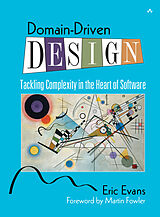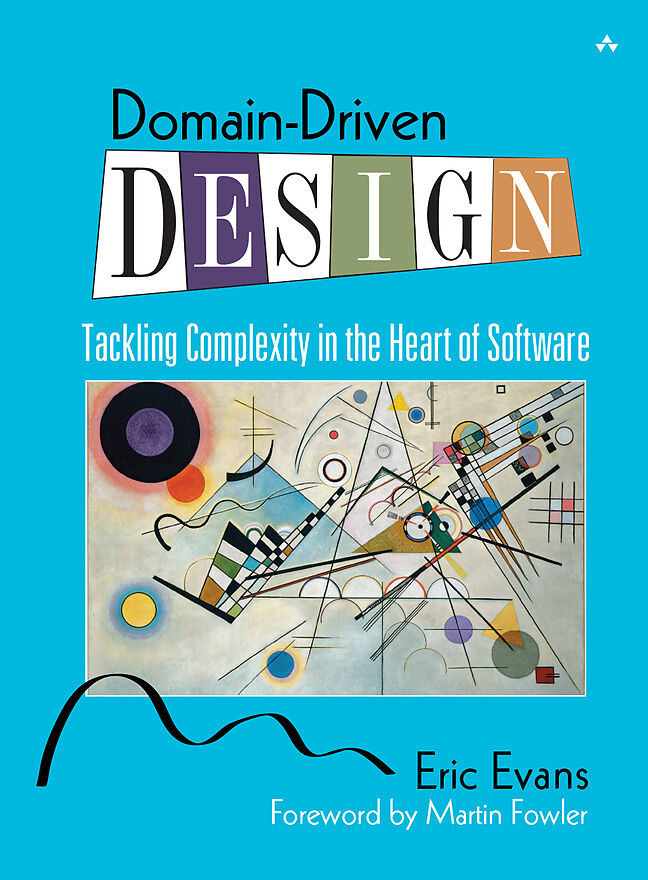Domain-Driven Design: Tackling Complexity in the Heart of Software
Einband:
Fester Einband
EAN:
9780321125217
Untertitel:
Tackling Complexity in the Heard of Software
Genre:
Informatik
Autor:
Eric Evans
Herausgeber:
Pearson Academic
Auflage:
1. Auflage
Anzahl Seiten:
560
Erscheinungsdatum:
20.08.2003
ISBN:
978-0-321-12521-7
Incorporate effective domain modeling into the software development process Software design thought leader and founder of Domain Language, Eric Evans, provides a systematic approach to domain-driven design, presenting an extensive set of design best practices, experience-based techniques, and fundamental principles that facilitate the development of software projects facing complex domains. Intertwining system design and development practice, this book incorporates numerous examples based on actual projects to illustrate the application of domain-driven design to real-world software modeling and development. Domain Model : Part I outlines the goals of domain-driven development, defines terms, and gives an overview of the implications of using the domain model to drive communication and design Model-Driven Design : Part II condenses a core of best practices in object-oriented domain modeling into a set of basic building blocks and focuses on the kinds of decisions that keep the model and implementation aligned with each other, each reinforcing the other's effectiveness Refactoring: Part III delves into modeling principles that can guide choices along the way, and techniques that help direct the search Strategic Design : Part IV explores a triad of principles that apply to the system as a whole: context, distillation, and large-scale structure Throughout the book, discussions are illustrated not with over-simplified, problems, but with realistic examples adapted from actual projects. With this book in hand, object-oriented developers, system analysts, and designers will have the guidance they need to organize and focus their work, create rich and useful domain models, and leverage those models into quality, long-lasting software implementations. The book is a fun read. Eric has lots of interesting stories, and he has a way with words. I see this book as essential reading for software developersit is a future classic. Ralph Johnson, author of Design Patterns
Autorentext
Eric Evans is the founder of Domain Language, a consulting group dedicated to helping companies build evolving software deeply connected to their businesses. Since the 1980s, Eric has worked as a designer and programmer on large object-oriented systems in several complex business and technical domains. He has also trained and coached development teams in Extreme Programming.
Klappentext
Specific, concrete techniques that demonstrate why domain-driven design is the heart of business software Key teaching points are reinforced by entertaining stories taken from real projects Contains illustrative UML diagrams and supporting Java code that help the reader apply these techniques
Inhalt
Foreword.
Preface.
Acknowledgments.
I. PUTTING THE DOMAIN MODEL TO WORK. 1. Crunching Knowledge.
Ingredients of Effective Modeling. Knowledge Crunching. Continuous Learning. Knowledge-Rich Design. Deep Models. 2. Communication and the Use of Language.
UBIQUITOUS LANGUAGE. Modeling Out Loud. One Team, One Language. Documents and Diagrams. Written Design Documents. Executable Bedrock. Explanatory Models. 3. Binding Model and Implementation.
MODEL-DRIVEN DESIGN. Modeling Paradigms and Tool Support. Letting the Bones Show: Why Models Matter to Users. HANDS-ON MODELERS. II. THE BUILDING BLOCKS OF A MODEL-DRIVEN DESIGN. 4. Isolating the Domain.
LAYERED ARCHITECTURE. Relating the Layers. Architectural Frameworks. The Domain Layer Is Where the Model Lives. THE SMART UI ANTI-PATTERN Other Kinds of Isolation. 5. A Model Expressed in Software.
Associations. ENTITIES (A.K.A. REFERENCE OBJECTS). Modeling ENTITIES. Designing the Identity Operation. VALUE OBJECTS. Designing VALUE OBJECTS. Designing Associations That Involve VALUE OBJECTS. SERVICES. SERVICES and the Isolated Domain Layer. Granularity. Access to SERVICES. MODULES (A.K.A. PACKAGES). Agile MODULES. The Pitfalls of Infrastructure-Driven Packaging. Modeling Paradigms. Why the Object Paradigm Predominates. Nonobjects in an Object World. Sticking with MODEL-DRIVEN DESIGN When Mixing Paradigms. 6. The Life Cycle of a Domain Object.
AGGREGATES. FACTORIES. Choosing FACTORIES and Their Sites. When a Constructor Is All You Need. Designing the Interface. Where Does Invariant Logic Go? ENTITY FACTORIES Versus VALUE OBJECT FACTORIES. Reconstituting Stored Objects. REPOSITORIES. Querying a REPOSITORY. Client Code Ignores REPOSITORY Implementation; Developers Do Not. Implementing a REPOSITORY. Working Within Your Frameworks. The Relationship with FACTORIES. Designing Objects for Relational Databases. 7. Using the Language: An Extended Example.
Introducing the Cargo Shipping System. Isolating the Domain: Introducing the Applications. Distinguishing ENTITIES and VALUE OBJECTS. Role and Other Attributes. Designing Associations in the Shipping Domain. AGGREGATE Boundaries. Selecting REPOSITORIES. Walking Through Scenarios. Sample Application Feature: Changing the Destination of a Cargo. Sample Application Feature: Repeat Business. Object Creation. FACTORIES and Constructors for Cargo. Adding a Handling Event. Pause for Refactoring: An Alternative Design of the Cargo AGGREGATE. MODULES in the Shipping Model. Introducing a New Feature: Allocation Checking. Connecting the Two Systems. Enhancing the Model: Segmenting the Business. Performance Tuning. A Final Look. III. REFACTORING TOWARD DEEPER INSIGHT. 8. Breakthrough.
Story of a Breakthrough. A Decent Model, and Yet. The Breakthrough. A Deeper Model. A Sobering Decision. The Payoff. Opportunities. Focus on Basics. Epilogue: A Cascade of New Insights. 9. Making Implicit Concepts Explicit.
Digging Out Concepts. Listen to Language. Scrutinize Awkwardness. Contemplate Contradictions. Read the Book. Try, Try Again. How to Model Less Obvious Kinds of Concepts. Explicit Constraints. Processes as Domain Objects. SPECIFICATION Applying and Implementing SPECIFICATION. 10. Supple Design.
INTENTION-REVEALING INTERFACES. SIDE-EFFECT-FREE FUNCTIONS. ASSERTIONS. CONCEPTUAL CONTOURS. STANDALONE CLASSES. CLOSURE OF OPERATIONS. DECLARATIVE DESIGN. Domain-Specific Languages. A Declarative Style of Design. Extending SPECIFICATIONS in a Declarative Style. Angles of Attack. Carve Off Subdomains. Draw on Established Formalisms, When You Can. 11. Applying Analysis Patterns.
12. Relating Design Patterns to the Model.
STRATEGY (A.K.A. POLICY). COMPOSITE. Why Not FLYWEIGHT?…

Leider konnten wir für diesen Artikel keine Preise ermitteln ...
billigbuch.ch sucht jetzt für Sie die besten Angebote ...
Die aktuellen Verkaufspreise von 6 Onlineshops werden in Realtime abgefragt.
Sie können das gewünschte Produkt anschliessend direkt beim Anbieter Ihrer Wahl bestellen.
Loading...
Die aktuellen Verkaufspreise von 6 Onlineshops werden in Realtime abgefragt.
Sie können das gewünschte Produkt anschliessend direkt beim Anbieter Ihrer Wahl bestellen.
| # | Onlineshop | Preis CHF | Versand CHF | Total CHF | ||
|---|---|---|---|---|---|---|
| 1 | Seller | 0.00 | 0.00 | 0.00 |
